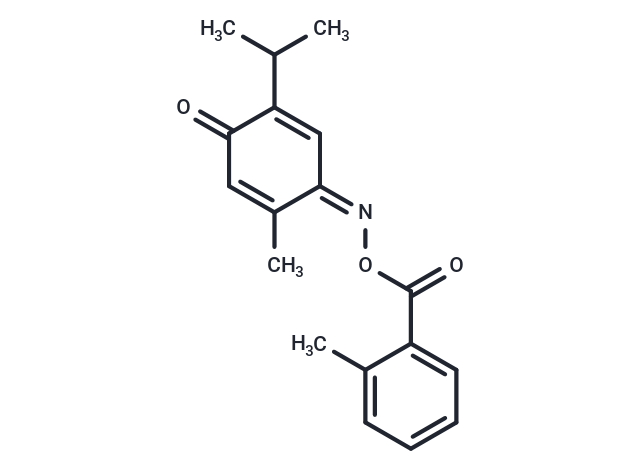Shopping Cart
- Remove All
 Your shopping cart is currently empty
Your shopping cart is currently empty

Poloxin is a non-ATP competitive Polo-like Kinase 1 inhibitor targeting the polo-box domain (IC50: appr 4.8 μM).

| Pack Size | Price | Availability | Quantity |
|---|---|---|---|
| 5 mg | $32 | In Stock | |
| 10 mg | $48 | In Stock | |
| 25 mg | $98 | In Stock | |
| 50 mg | $163 | In Stock | |
| 100 mg | $243 | In Stock | |
| 200 mg | $359 | In Stock | |
| 1 mL x 10 mM (in DMSO) | $50 | In Stock |
| Description | Poloxin is a non-ATP competitive Polo-like Kinase 1 inhibitor targeting the polo-box domain (IC50: appr 4.8 μM). |
| Targets&IC50 | PLK3 (PBD):53.9 μM, PLK1 (PBD):4.8 μM, PLK2 (PBD):18.7 μM |
| In vitro | Poloxin inhibits proliferation in both cell lines with a comparable efficiency through a 72 h period. Poloxin inhibits the polo-box domain (PBD) interaction (apparent IC50: ~4.8 μM). Poloxin (25 μM) causes defects in centrosome integrity, spindle formation, and chromosome alignment in mitosis. Centrosomal fragmentation induced by Poloxin is partially rescued by Kiz T379E. Poloxin (25 μM) activates the mitotic checkpoint, induces apoptosis and inhibits proliferation of MDA-MB-231 cells. Poloxin shows a loose Plk1 PBD specificity with 4-10 times higher IC50 values for Plk2 and Plk3, and does not significantly inhibit other types of phosphopeptide-binding domains such as FHA, WW, and SH2 domains[1][2][3]. |
| In vivo | Poloxin (40 mg/kg) reduces the proliferation of MDA-MB-231 cells. It also suppresses the growth of the tumor nude mice bearing established xenografts of MDA-MB-231[1]. |
| Molecular Weight | 297.35 |
| Formula | C18H19NO3 |
| Cas No. | 321688-88-4 |
| Smiles | CC(C)C1=C\C(=N\OC(=O)c2ccccc2C)C(C)=CC1=O |
| Relative Density. | 1.11 g/cm3 |
| Storage | Powder: -20°C for 3 years | In solvent: -80°C for 1 year | Shipping with blue ice. | |||||||||||||||||||||||||
| Solubility Information | DMSO: 14 mg/mL (43.72 mM), Sonication is recommended. | |||||||||||||||||||||||||
Solution Preparation Table | ||||||||||||||||||||||||||
DMSO
| ||||||||||||||||||||||||||

Copyright © 2015-2024 TargetMol Chemicals Inc. All Rights Reserved.